After suffering a heart attack, Roland Zahner decided to rearrange his priorities in 2009. He downsized from his office job and resumed the manual labor he had neglected since becoming an apprentice model carpenter. He found a first new project with the“Wiler Hofpferden” – noble wooden rocking horses in the range and logo of Franz Carl Weber. Then the accidental contact with Gérald Pot in January 2010 was groundbreaking. Pot told him about his work as an alphorn maker and that he was looking for someone to continue his work. Roland was immediately enthusiastic. This was the beginning of an eventful relationship between the Valais master and his student from eastern Switzerland. Looking back, Roland speaks above all with respect and gratitude of Pot, who revealed to him the secrets of alphorn making over a period of several months of apprenticeship.
Roland now devotes about 40% of his time to alphorn making. He also works as a technical consultant for a specialized SME. He is happy with this mix. In the production of helvetic alphorns, he combines traditional craftsmanship with modern manufacturing. He mills the cup and the interior on a CNC machine that he has rented from a carpenter friend. He does the rest in his workshop near Uzwil. There he also turns the pipes on a Soviet-made lathe weighing several tons. Most of the time Roland works alone; a part-time employee assists him with the pedigree wrapping, and occasionally a friend gives him a hand. He estimates the amount of manual labor per alphorn at 50-60 hours. This allows him to produce about 20 alphorns per year. In addition, he sells mouthpieces under the helvetic brand, which he has CNC-milled according to his plans in a turnery and then finishes by hand himself.
The design of helvetic alphorns follows the horns of pot. Roland has only optimized the cup’s shape visually and acoustically. The horns stand out for their very wide bore: the tube diameter widens almost linearly from the barrel to the cup. This also allows him to store two parts inside each other. With a wall thickness of about 7.5mm, the alphorns are on the solid side. Roland builds his alphorns in spruce, as a popular variant with a cup in pine. He sources the wood from various sawmills between Albula and Neuchâtel – he does not promise moonwood or hazel spruce. He paints his instruments inside (with a 2-component polyurethane varnish) and outside. The details such as feet, end and cup ring are simple and neatly finished – I find the little barrel especially pretty. The bushings are made of gold anodized aluminum. Roland builds the horns in four parts – he is currently developing an eight-piece (travel) alphorn with bayonet lock.
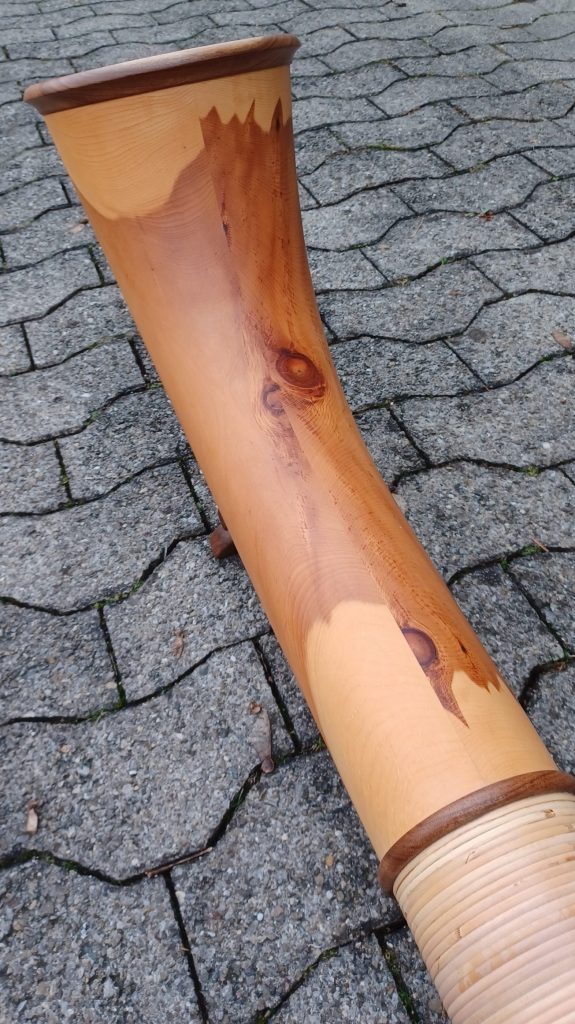
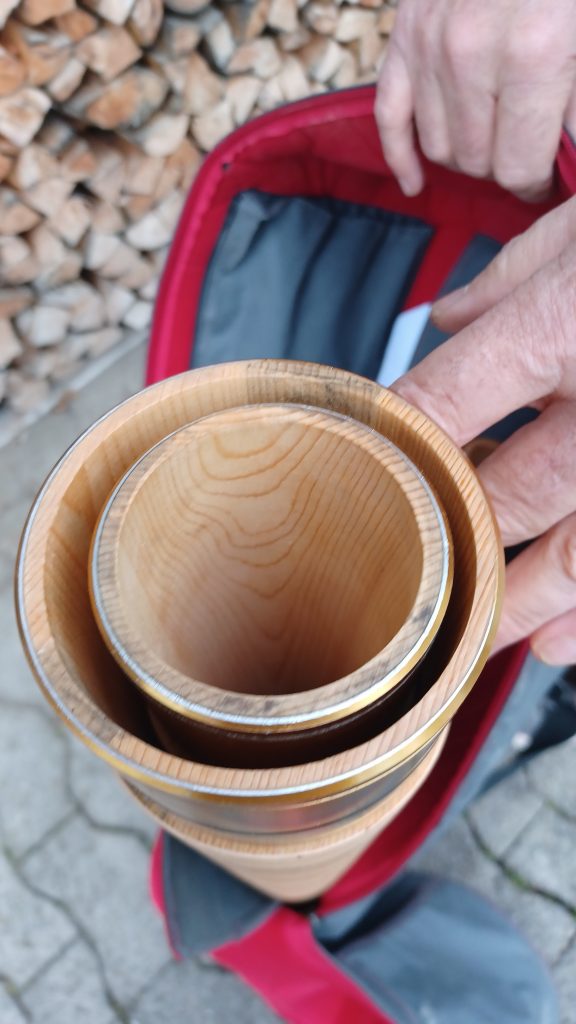
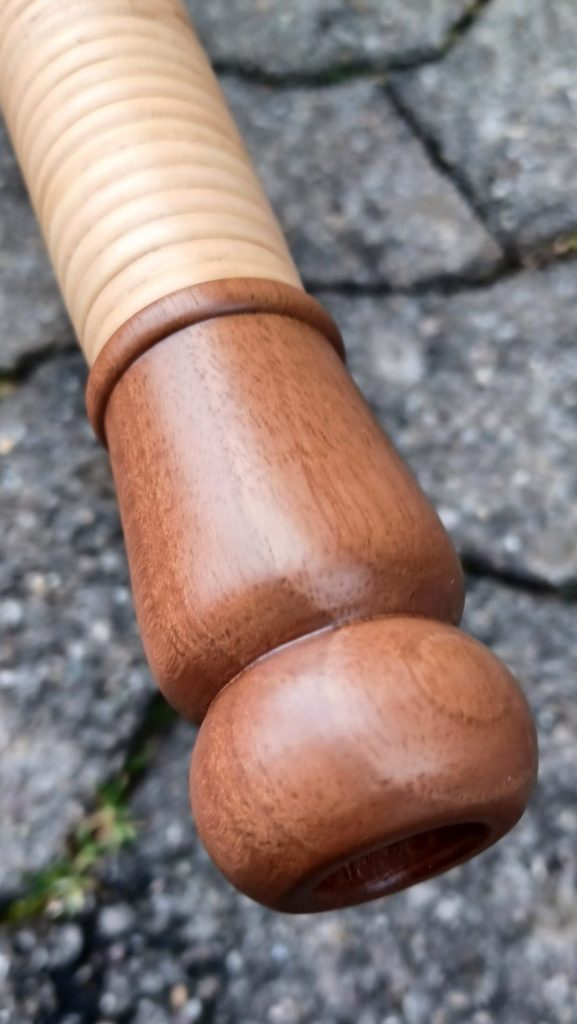
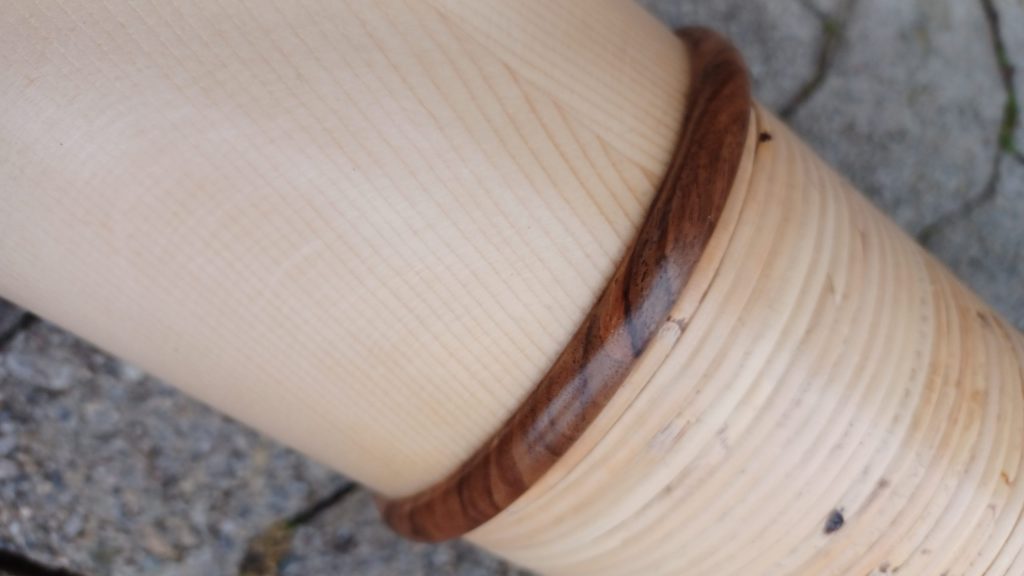
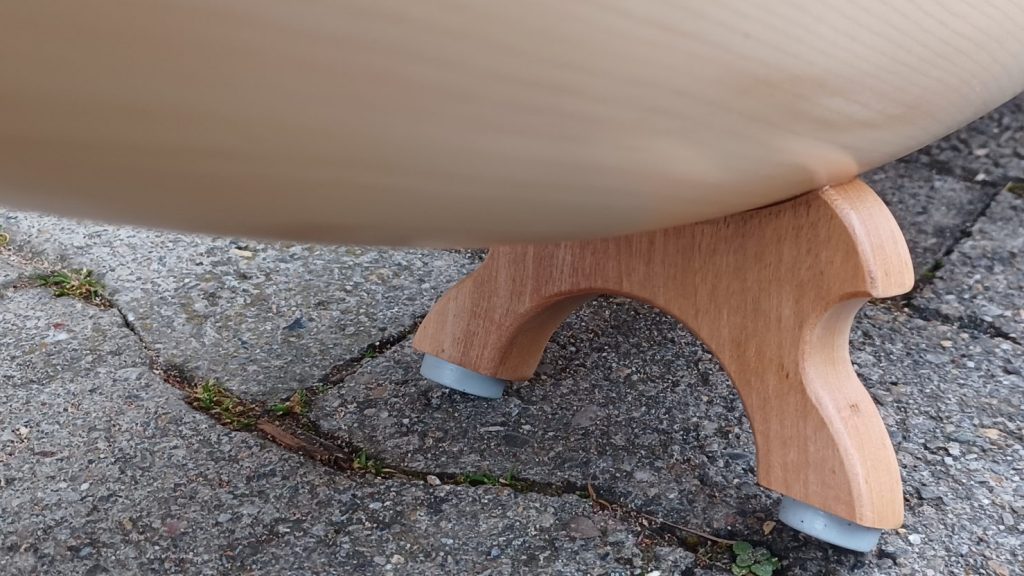
During my visit to his workshop, I was able to try out two alphorns – one cup in spruce and one in pine. As expected, the instrument sounded slightly warmer with the Arven cup, but otherwise I couldn’t notice any significant differences. Roland tunes his alphorns to a1=442Hz. The test took place outside at 10°C – moreover with two differently warmed horns. Due to the expected temperature effect, the measured intonation was on average 24 and 28 Cts too low. When remeasuring the recordings at home, I observed that the notes between c and g” meander about +/- 13 cts around the natural scale (above g” they are more clearly below it): reasonably experienced wind players should therefore be able to intonate cleanly on these instruments without any problems. I particularly liked the dynamics. The horns can be pushed smoothly from delicate pianissimo to fortissimo, where they have a full sound with rich overtones – a true “power horn.” They are also more open than average to gimmicks like bending tones or playing polyphonically. The notes respond cleanly, but need enough pressure and control in legato. Fast staccato playing succeeded surprisingly well despite the mass.
The price of a helvetic alphorn including carrying bag is 3’700 CHF. For various tunings from E-flat to B-flat there are matching reed kits between 300-600 CHF. Potential buyers must be prepared for a delivery period of about one year. Roland has a solid customer base among the “wild ones.” So he regularly sells alphorns to USA. Gradually, however, he is making a good reputation in the traditional associations.
Additional information can be found on Facebook and the helvetic alphorn website. There is also a professionally made image film showing Roland making an alphorn. More impressions in my video below:
Conclusion: Cleanly crafted instrument with characteristic scale length. An ideal alphorn to play outside in the mountains, but with its civilized dynamics it also makes a good impression in an ensemble.
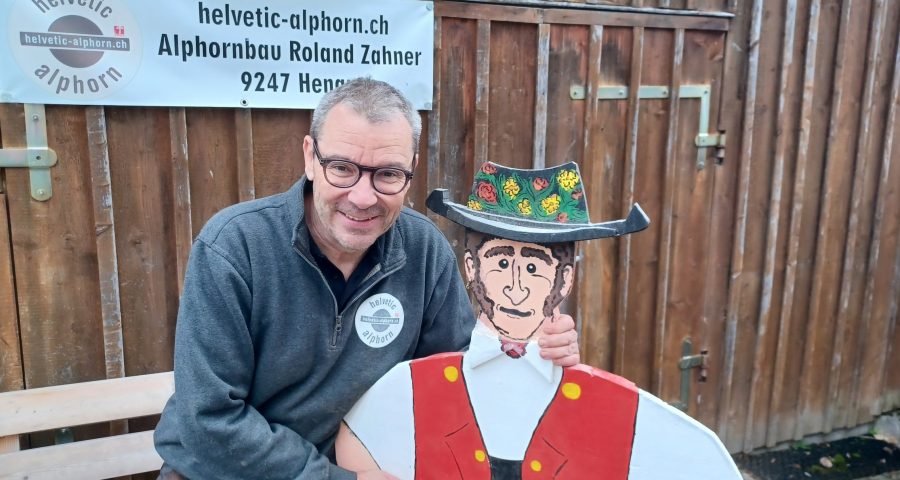
Leave a Reply